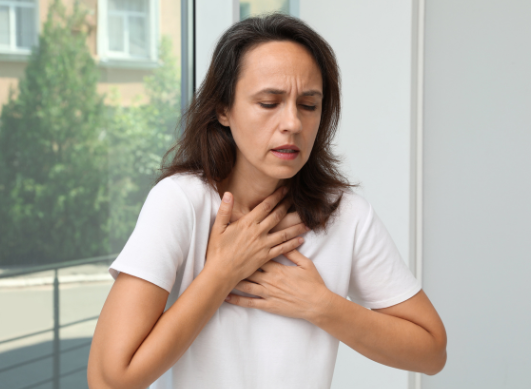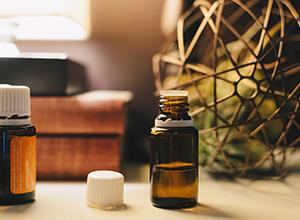- Home
- Forums
- COPD Forum
- Treatments for COPD
- Breathing Exercises for People with COPD
Patients COPD
Breathing Exercises for People with COPD
- 26 views
- 0 support
- 1 comment
All comments
![]()
brthfree
Good advisor
![]()
brthfree
Last activity on 12/24/2023 at 10:47 PM
Joined in 2018
16 comments posted | 14 in the COPD Forum
Rewards
-
Good Advisor
-
Contributor
-
Explorer
This is Great!
Give your opinion
Survey
Survey
Members are also commenting on...
![]()
![]()
![]()
![]()
cbholder3
@Thakera Yes, even on Medicare it was $400+ a month. My Pulmonologist arranged for me to get it with no copay from GSK, GlaxoSmithKline, you can look up their assistance program at https://www.gskforyou.com/ Hope it goes okay for you, I am just in the process fo renewing mine for next year.
GSKForYou | GSK Patient Assistance Program
Learn how our program can assist you if you need help paying for your GlaxoSmithKline prescription medicines and vaccines, whether you have coverage or not.
See the best comment
![]()
![]()
![]()
![]()
CarolSchmidt
@KathyA, please read what I wrote above on using oxygen. I am so, so, thrilled to have portable oxygen that gave me more of my life back. I was told in 2011 when I lived in San Miguel de Allende at 6,400 ft altitude that I needed to go on oxygen, but all I saw around town was one woman with the heavy metal canisters in a cart behind her, and that looked terrible. I moved back to near sea level and put off needing oxygen all day for another seven years, just a Bipap at night.
Finally I was huffing and having to stop every few feet even near sea level, but I still didn't want to be lugging a heavy canister behind me. I ran into an old friend who was always really active, ballroom dancing, hiking, fly fishing in rivers. And there she was with an Inogen in a backpack, doing everything she'd always done!
She showed me all about hers and the total package with machine, extra 8-hour battery, two battery chargers for house and car, carrying case, and extended warranty, was around $3,300!
Finally I saved enough for it and have loved it every minute since. I started on 2 for almost a year but had to go to 3 for every day. I switch to 4 liters a minute several times a day when I still get winded bad, and have gone up to 5 for stair climbing. I worry that I will need to go higher than 5 eventually, but I hope by then there will be sronger machines developed that go higher, though then the $500 batteries only last a few hours before needing recharging, instead of 6-8.
The portable ones now are breath-operated--you have to be breathing into the nose cannula for them to work. And my BiPap at night requires continuous flow, which the big oxygen machine Medicare covers provides, so I need both machines. Some day they may all be continuous flow and still portable.
There are cheaper, refurbished units available from the Inogen factory, too. After 1 1/2 years mine started sending strange messages and I called the factory and they sent a new one out the next day! I sent them the old one back no charge. So I am pleased with service, too.
Hope this helps you accept your machine. I am so, so happy I got mine and wish Medicare paid for everyone who needed one.(I understand in a few cases they will pay for one now, but not my particular Cigna Medicare Advantage plan.)
I bet when you go to your reunion you won't be the only one on oxygen! And everyone will be so old! The ones who are already dead and not there are the ones to think about--how many of them had COPD? Fourth leading cause of death in the US before Covid, so now we're fifth. Be glad for all the help you can get! I hope you have a wonderful reunion!
See the best comment
![]()
![]()
![]()
![]()
cbholder3
@Thakera Yes, even on Medicare it was $400+ a month. My Pulmonologist arranged for me to get it with no copay from GSK, GlaxoSmithKline, you can look up their assistance program at https://www.gskforyou.com/ Hope it goes okay for you, I am just in the process fo renewing mine for next year.
GSKForYou | GSK Patient Assistance Program
Learn how our program can assist you if you need help paying for your GlaxoSmithKline prescription medicines and vaccines, whether you have coverage or not.
See the best comment
![]()
![]()
![]()
![]()
CarolSchmidt
@KathyA, please read what I wrote above on using oxygen. I am so, so, thrilled to have portable oxygen that gave me more of my life back. I was told in 2011 when I lived in San Miguel de Allende at 6,400 ft altitude that I needed to go on oxygen, but all I saw around town was one woman with the heavy metal canisters in a cart behind her, and that looked terrible. I moved back to near sea level and put off needing oxygen all day for another seven years, just a Bipap at night.
Finally I was huffing and having to stop every few feet even near sea level, but I still didn't want to be lugging a heavy canister behind me. I ran into an old friend who was always really active, ballroom dancing, hiking, fly fishing in rivers. And there she was with an Inogen in a backpack, doing everything she'd always done!
She showed me all about hers and the total package with machine, extra 8-hour battery, two battery chargers for house and car, carrying case, and extended warranty, was around $3,300!
Finally I saved enough for it and have loved it every minute since. I started on 2 for almost a year but had to go to 3 for every day. I switch to 4 liters a minute several times a day when I still get winded bad, and have gone up to 5 for stair climbing. I worry that I will need to go higher than 5 eventually, but I hope by then there will be sronger machines developed that go higher, though then the $500 batteries only last a few hours before needing recharging, instead of 6-8.
The portable ones now are breath-operated--you have to be breathing into the nose cannula for them to work. And my BiPap at night requires continuous flow, which the big oxygen machine Medicare covers provides, so I need both machines. Some day they may all be continuous flow and still portable.
There are cheaper, refurbished units available from the Inogen factory, too. After 1 1/2 years mine started sending strange messages and I called the factory and they sent a new one out the next day! I sent them the old one back no charge. So I am pleased with service, too.
Hope this helps you accept your machine. I am so, so happy I got mine and wish Medicare paid for everyone who needed one.(I understand in a few cases they will pay for one now, but not my particular Cigna Medicare Advantage plan.)
I bet when you go to your reunion you won't be the only one on oxygen! And everyone will be so old! The ones who are already dead and not there are the ones to think about--how many of them had COPD? Fourth leading cause of death in the US before Covid, so now we're fifth. Be glad for all the help you can get! I hope you have a wonderful reunion!
See the best comment
Articles to discover...
Medication fact sheets - patient opinions...
Subscribe
You wish to be notified of new comments
You have been subscribed









Lee__R
Community managerGood advisor
Lee__R
Community manager
Last activity on 04/03/2020 at 5:04 PM
Joined in 2018
1,336 comments posted | 35 in the COPD Forum
2 of their responses were helpful to members
Rewards
Good Advisor
Contributor
Messenger
Explorer
Friend
Top chef
Chronic obstructive pulmonary disease is a disorder of the lungs that makes it difficult to breathe. Its main cause is smoking, but it can also be caused by exposure to pollution, fumes, or other irritating substances.
The condition has no cure, and it is the third leading cause of death in the United States.
Contents of this article:
COPD and pulmonary rehab
Chronic obstructive pulmonary disease (COPD) is usually a combination of two conditions: emphysema and chronic bronchitis.
Pulmonary rehab may include tailored exercise and fitness as well as breathing exercises.
In emphysema, tiny air sacks in the lungs can collapse, become stretched out, or be destroyed, resulting in problems with gas exchange in the lungs.
The lungs may not be able to get as much oxygen as they should, so a person with emphysema may feel out of breath while exercising, or even at rest. They may also experience a long-term cough that does not go away.
Chronic bronchitis, the other part of COPD, is associated with inflammation in the lungs' airways. As the airways are always inflamed, they produce mucus and can become clogged.
This makes it more difficult for the lungs to move air in and out. It often causes a feeling of breathlessness, tightness in the chest, and a chronic or long-term cough that produces mucus.
Many people with COPD find that even light activity can make them feel out of breath, and it may feel harder to breathe as time goes on. This can lead to a cycle of becoming less active and feeling increasingly breathless with reduced activity.
How pulmonary rehab can help
Pulmonary rehab is a program for people with breathing problems such as COPD. It is often done in a hospital or clinic. The patient works with a pulmonary rehab team, which may include doctors, nurses, pulmonary therapists, and other healthcare providers.
Pulmonary rehab aims to help a person improve their well-being and quality of life. It may include:
COPD cannot be reversed, but pulmonary rehab can help the lungs work better.
Pursed-lip breathing for COPD
While breathing exercises are a part of pulmonary rehab, they can also be done at home or whenever a person feels short of breath.
This can help to avoid quick breathing and panic when short of breath. Done regularly, proper breathing exercises can help the lungs to get rid of old, nonoxygenated air so they can take in fresh, oxygen-rich air more efficiently.
Pursed-lip breathing is one of the most popular breathing exercises for people with COPD. With regular practice, this exercise can help to slow down breathing and therefore get more air in and out of the lungs.
It improves the lungs' ability to get oxygen in and carbon dioxide out. A study published in American Family Physician found that it improves a person's ability to exercise with COPD.
To practice this exercise, a person should:
Pursed-lip breathing may require practice and concentration. It should be practiced for 5 to 10 minutes each day. It is best to try it for the first time when a person is breathing normally.
Over time, pursed-lip breathing may help people with COPD to become more active and able to breathe easier.
Diaphragmatic breathing (belly breathing)
Diaphragmatic breathing, or belly breathing, helps a person use their diaphragm to support their breath.
The diaphragm is a muscle in the belly that helps to inflate the lungs.
People with COPD may use their diaphragm less and use their back and shoulders more. This makes their breathing weaker.
Diaphragmatic breathing can help a person to focus on using their diaphragm again.
To practice diaphragmatic breathing, a person should:
Activities that help COPD
Some unrelated exercises and activities have also shown promise in medical studies as ways to improve quality of life for COPD patients.
Singing classes
A study in BMC Pulmonary Medicine found that people who took singing classes for 8 weeks fared better than their peers, who instead took a film class.
The singing group showed an improvement in physical well-being by the end of the study.
Although the exact reason for the improvement is unknown, the authors suggest that singing classes may be a useful activity for people with COPD, in combination with medical treatment.
Though specific improvements to breathing were not identified in the study, singing often involves diaphragmatic breathing. As a result, it may be an effective complement to pulmonary rehab and pursed-lip breathing.
Yoga
Yoga may help with deep breathing and relaxation.
The deep breathing and specific postures practiced in yoga can help with relaxation, flexibility, and mind-body wellness.
A study in the Journal of Thoracic Disease suggests that yoga may help people with COPD to improve lung function and their ability to exercise. Because there are more than 100 different forms of yoga, it is important to choose one that is safe and appropriate for a person's health and ability.
Tai Chi
Tai Chi is an ancient Chinese form of martial art that focuses on gentle exercise, stretching, meditation, and mindfulness.
A study in the Journal of Physiotherapy found that Sun-style Tai Chi improved walking performance and quality of life in people with COPD. The other types of Tai Chi have not been studied, though they are considered safe for most people due to their low impact and health benefits.
Lifestyle tips for better breathing
Because COPD causes poor lung function as well as weakened respiratory muscles, it is important to take care of the respiratory tract with healthy lifestyle choices.
In addition to medical care, people with COPD should:
Together, these measures can help many people to become more active and feel better.